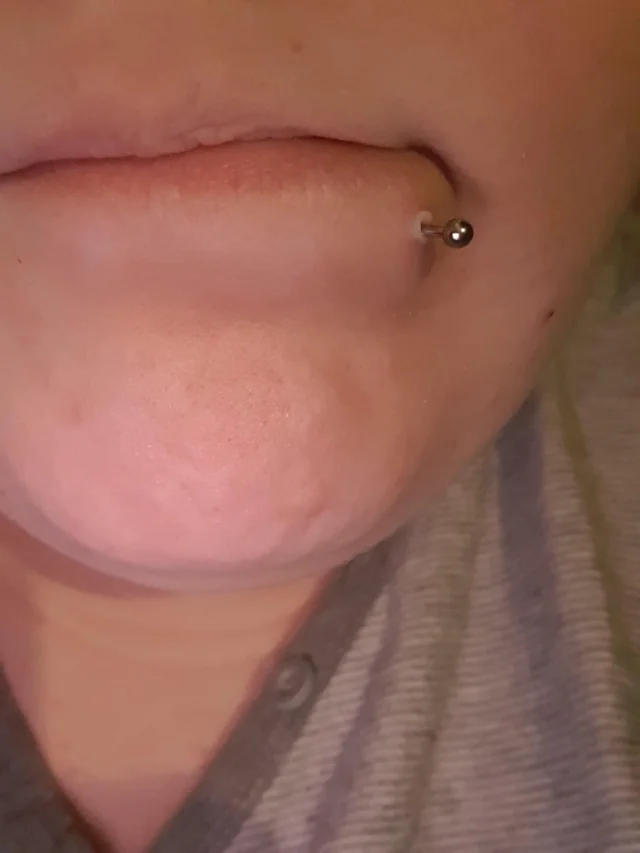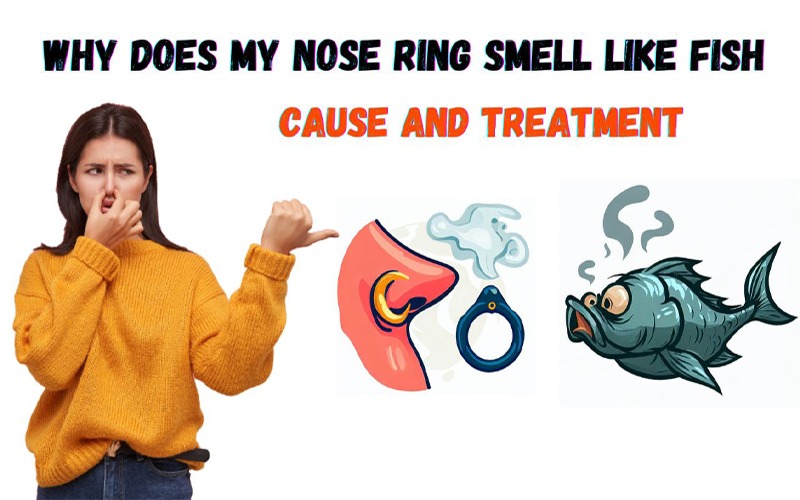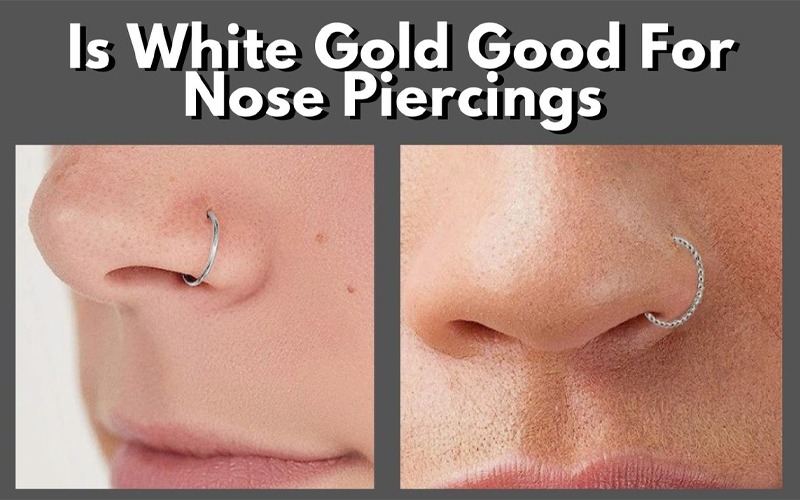Lip piercings are a trendy form of body modification that allow individuals to express their unique style and personality. However, sometimes, unexpected issues like a white ring around the lip piercing can arise, causing concern and confusion among piercing enthusiasts. If you’ve noticed this phenomenon, fret not – you’re not alone, and there are reasons behind it.
In this comprehensive guide, we’ll delve into the intricacies of the white ring around lip piercings, exploring the potential causes behind its formation and the most effective treatments to address it. Whether you’re a seasoned piercing aficionado or someone considering a lip piercing for the first time, understanding the nuances of this phenomenon is crucial for maintaining the health and aesthetics of your piercing.
Join us as we uncover the mysteries surrounding the white ring around lip piercings, empowering you with the knowledge to navigate through potential challenges and ensure your lip piercing remains a source of pride and self-expression. Let’s dive in!
Understanding Lip Piercing Complications
Complications related to lip piercings can range from infections to allergic reactions. It’s crucial for individuals to recognize the signs early to ensure proper treatment.
Identifying Infection Signs
Common signs of infection include:
- Swelling: Some initial swelling after piercing is normal, but excessive or persistent swelling may indicate an infection.
- Redness: An expanding area of redness around the piercing site can be a sign of infection.
- Pain: Pain that intensifies instead of subsiding after the first few days post-piercing can be concerning.
- Discharge: Unusual discharge, especially if it’s yellow or green and has an odor, could suggest an infection.
- Warmth: The area around the piercing feeling hotter than the surrounding skin is a warning sign.
- Fever: A fever can sometimes accompany an infection related to a lip piercing.
Recognizing Allergic Reactions
Indicators of an allergic reaction to piercing material:
- Rash: A rash or hives near the pierced area might indicate an allergic response.
- Itching: Persistent itching in the absence of an infection could be a sign of an allergic reaction.
- Swelling: Unlike infection-related swelling, swelling from an allergy may be accompanied by itchiness and skin irritation.
- Redness: Skin that’s red and irritated without signs of infection can signify an allergy.
Choosing hypoallergenic materials, like titanium or surgical-grade stainless steel, for any jewelry can help minimize the risk of allergic reactions.
Causes of a White Ring Around Lip Piercing
A white ring around a lip piercing can be concerning and is typically a sign of an issue that needs attention. Whether it’s related to the jewelry itself, aftercare practices, or the piercing procedure, it’s important to identify the cause to address the problem effectively.
Jewelry-Related Factors
The type of material and the fit of the jewelry can both contribute to the formation of a white ring around a lip piercing. Hypoallergenic materials such as surgical steel, titanium, and biocompatible plastics are less likely to cause irritation. In contrast, nickel or brass can often lead to allergic reactions and the development of the white ring. Additionally, jewelry that is too tight may restrict blood flow, while pieces that are too loose can move excessively, both resulting in irritation and possible infection.
- Optimal Materials: Surgical steel, Titanium, Biocompatible plastics
- Materials to Avoid: Nickel, Brass
- Fit Considerations:
- Too tight: restricts blood flow
- Too loose: causes excessive movement
Piercing Aftercare and Hygiene
Proper aftercare is critical to prevent infections and other complications that can lead to the appearance of a white ring. It’s imperative to clean the piercing with saline solution or non-irritating soap twice daily. Moreover, one should avoid touching the piercing with dirty hands or letting it come into contact with makeup, lotions, or saliva, as these can introduce bacteria and lead to infection.
- Cleaning: Twice daily with saline or non-irritating soap
- Avoid Contact With:
- Dirty hands
- Makeup and lotions
- Saliva
Piercing Technique and Healing Process
The way a lip piercing is carried out can influence the likelihood of developing a white ring. The use of sterile equipment, along with a professional and experienced piercer, minimizes the risk of complications. A piercing that is not done properly can result in trauma to the tissue, leading to infection. The healing process is also a delicate time; any disturbance or pressure to the area can lead to issues such as a white ring forming around the site.
- Importance:
- Sterile equipment
- Experienced piercer
- Healing Process:
- Avoiding trauma or pressure to the pierced area
Treatment and Care for Lip Piercing Issues
Proper aftercare is vital for healing lip piercings and preventing complications. This section provides reliable methods for cleaning, and guidance on when to consult a healthcare provider.
Appropriate Cleaning Methods
Daily Care:
- Saline Solution: Rinse the piercing with a saline solution twice a day. Mix 1/4 teaspoon of non-iodized sea salt with 8 ounces of warm distilled water.
- Soap Wash: Occasionally, a mild, fragrance-free liquid soap can be used. Lather around the piercing gently, then rinse thoroughly.
Dos and Don’ts:
- Avoid Alcohol and Peroxide: These substances can irritate the piercing and delay healing.
- Don’t Remove Jewelry: Removing the jewelry can cause the hole to close and trap infection inside.
When to Seek Medical Attention
- Signs of Infection: Persistent redness, swelling, warmth, and discharge after the initial healing period may indicate an infection.
- Severe Pain or Fever: If severe pain occurs or is accompanied by a fever, professional medical advice should be sought immediately.
Preventing Complications with Lip Piercings
Proper aftercare and the correct choice of jewelry are vital in preventing complications associated with lip piercings. Adherence to these guidelines helps minimize risks such as infection and the development of unsightly white rings or scarring around the piercing.
Choosing the Right Jewelry Material
When selecting jewelry for a lip piercing, one should always opt for materials that are biocompatible and less likely to cause an allergic reaction. The most recommended materials are:
- Titanium: Hypoallergenic and resists corrosion.
- Surgical Stainless Steel: Less expensive but still commonly used for its low allergic potential.
- BioPlast/BioFlex: Flexible and can reduce gum and teeth damage.
Avoid jewelry made of nickel or brass as they are more likely to cause allergic reactions or irritate the piercing.
Maintaining Good Oral Hygiene
Maintaining oral hygiene is pivotal in preventing infections in lip piercings. The key practices include:
- Regular Brushing and Flossing: At least twice a day to keep the mouth clean.
- Non-Alcoholic Mouthwash: Rinse with an alcohol-free mouthwash after every meal to prevent bacterial growth.
Additionally, one should avoid playing with the piercing and putting undue pressure on it with their tongue or teeth to reduce the risk of irritation and to allow healing.





